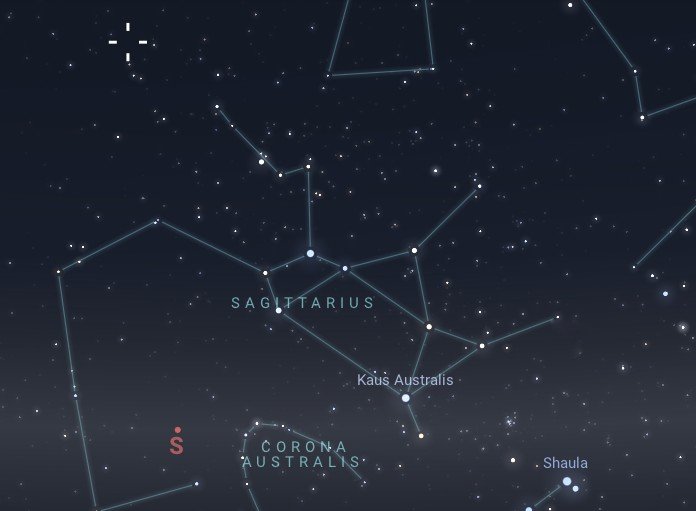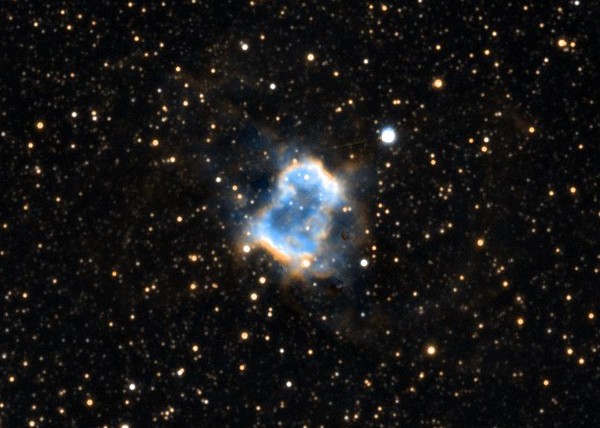NGC 6445, also known as the ‘Little Gem,’ is a planetary nebula located in the constellation of Sagittarius. Planetary nebulae are formed during the final stages of a star’s life cycle, when a dying star sheds its outer layers into space, creating a beautiful and often intricate nebulous structure. Here’s some more details about NGC 6445:
Location
The distance to NGC 6445 from Earth is approximately 4,000 light-years. The nebula is located relatively close to the celestial equator, with an ascension of 17h 48m 51s, and declination of -20° 21′ 06″. This means it can be observed from both the northern and southern hemispheres, although it is more prominently visible from locations closer to the equator and in the southern hemisphere.
Appearance and Composition
NGC 6445 appears as a faint, round or slightly elongated nebula when observed through a telescope. It exhibits delicate filaments and intricate patterns of gas and dust swirling around its central star. The nebula’s appearance is characterized by its soft, diffuse glow, which is primarily emitted by ionized gases such as hydrogen and helium.
At the heart of NGC 6445 lies a white dwarf, the remnant of the star that ejected the nebula’s material. This white dwarf is a hot, dense stellar core that emits intense ultraviolet radiation, causing the surrounding gases to fluoresce and emit light. The central star’s high temperature and luminosity contribute to the nebula’s overall brightness and appearance.
NGC 6445’s morphology may exhibit symmetrical or asymmetrical features, depending on the dynamics of the material ejected by the central star. It may display structures such as shells, lobes, and knots, which provide insight into the complex interactions between the central star and its surrounding environment during the nebula’s formation.
The colours observed in the nebula are primarily due to the emission of specific wavelengths of light by ionized gases within the nebula. Hydrogen emission often appears red, while oxygen emission can appear green or blue, contributing to the nebula’s overall colour palette.
NGC 6445 is a captivating object for astrophotography and visual observation, offering astronomers a glimpse into the final stages of stellar evolution and the intricate beauty of the cosmos.
Observation
June through September (winter in southern latitudes) provides the best window for viewing NGC 6445, with July and August being optimal. Observers in the southern hemisphere will have a clearer view since the constellation Sagittarius appears higher in the sky for them.

NGC 6445 is too faint to be seen with binoculars, even under dark skies. Under ideal conditions (dark skies and no Moon), NGC 6445 may appear as a faint, fuzzy patch through smaller telescopes, but you won’t be able to resolve its shape or structure. With an 8-inch or larger telescope, you can detect some of its rectangular shape and faint detail, especially with the help of an O-III or UHC filter, which enhances the contrast by isolating the emission from ionized gases.



